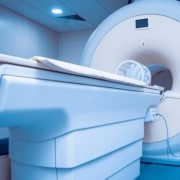How Health IT Advancements Make Genomic Medicine a Reality
In the recent past, the practice of using genetic sequencing to treat rare diseases was beyond our capacity. However, new technology advancements are making this dream a reality. The field of genomic medicine is growing.
What Does Genomic Medicine Mean?
According to news-medical.net, genomic medicine means catering medical care to a patient by using their own genetic makeup. Every cell that exists in your body contains DNA. This DNA has a say in everything about you, from the color of your hair to the way your body functions as a whole. The genome is the entire DNA content present in one cell of a living being.
Genomic medicine is making its way into more hospitals. At first, this practice was used to build complete genetic maps of patients. Since then, researchers have built off of that work. They have created a clearer understanding of human biology and chronic diseases. It is a non-invasive technology that can target diseases like brain cancer and cholera.
Research and Technology Make Genomic Medicine a Reality
Doctor Eric Green, Director of the NHGRI in Bethesda, MD, states that “The first change is an incredible increase in our knowledge about the human genome…and how changes or differences between peoples’ genomes influence health and confer risk for disease.”
It was not just one big technological leap that made this practice possible. It was a series of small changes over time that allowed this theory to become a reality. First, healthcare technology advances vastly reduced the cost of DNA sequencing.
- The first sequencing of a genome cost nearly $1 million and today it costs about $1,000.
The lower cost made further advancements even easier. Stephen Kingsmore, President and CEO of Rady Children’s Institute for Genomic Medicine gives credit to two specific pieces of technology. “The new Illumina NovaSeq sequencer has…increased the speed and scalability of human genome sequencing. Likewise… the Edico Genome DRAGEN software/hardware have enabled genome analysis to be performed in about one hour.”
Is It Making a Difference?
Experts believe we are just seeing the beginning of the effect genomic medicine can have. Still, it is already having an impact through a handful of practices that all have a medically legitimate benefit.
- Noninvasive prenatal testing: The current biggest use of genomic medicine has been in the prenatal field. Prenatal genetic tests can give parents an early view into the future of their offspring. A basic blood sample from the mother can provide a look into the future health of a child.
- Treating and diagnosing cancer: Being able to sequence DNA will allow doctors to look into a specific patient’s cancer. Then they will able to target that particular cancer with certain treatments.
- Pharmacogenomics: People all over the world have to live with all sort of allergies. Many allergic reactions come as a surprise. Genome sequencing could allow doctors to predetermine if a patient might have a bad reaction to a drug or medication.
Building the Groundwork to Make Genomic Medicine Possible
Kingsmore says that, in order to be ready for the future of genomic medicine and its applications, healthcare facilities have to place an importance on building “a well-rounded healthcare technology ecosystem.”
This means developing premium IT departments, then fully integrating them into the functions of a hospital. This will allow the hospital to share information freely and quickly. Proper access to technology also allows for the gathering of genome information with cloud-based software. A practice like that will help genomic medicine grow even faster.
“None of this is going to happen overnight.”
Dr. Eric Green cautions everyone not to expect genomic medicine in their medical practice tomorrow. There are still regulatory and reimbursement issues that need to be resolved. Healthcare professionals are also figuring out the best applications of this groundbreaking practice.
However, Green encourages us this science is expanding, “I think it’s very clear that the train has left the station…we are going to find ourselves in a very interesting transition phase for the next 10 to 20 years as it begins to spread throughout clinical practice.”
Just like the advances that brought us genomic medicine, the use of such practices will also be a slow bit-by-bit process.
For more information on genomic medicine, look to [healthtechmagazine.net].






